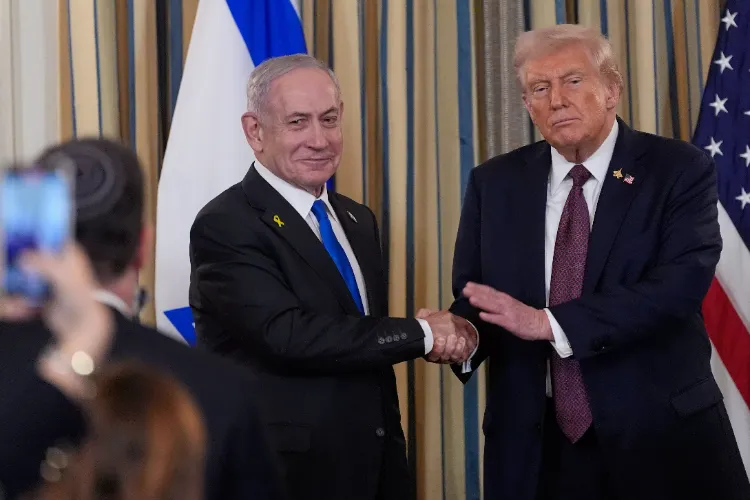
Dubai/Cairo
A bold new peace proposal unveiled in Washington has sparked cautious optimism across the Middle East. On Monday, US President Donald Trump, alongside Israeli Prime Minister Benjamin Netanyahu, presented a sweeping 20-point plan aimed at halting the war in Gaza, releasing hostages, and charting a new path for the devastated territory.
The plan has drawn swift support from eight Arab and Muslim-majority nations – Jordan, Qatar, the United Arab Emirates, Indonesia, Pakistan, Türkiye, Saudi Arabia, and Egypt. Their foreign ministers issued a joint statement welcoming the initiative, praising Washington’s effort to “end the war, rebuild Gaza, prevent displacement of the Palestinian people, and advance comprehensive peace.” They pledged to work closely with the US to ensure humanitarian aid flows unhindered and reconstruction begins.
But while the plan carries international backing, its toughest hurdle remains Hamas. The militant group has not yet accepted the terms, which demand it disarm and relinquish governing power in Gaza in exchange for reconstruction, aid, and amnesty for members who renounce violence.
Key Provisions of the Plan
The proposal calls for an immediate ceasefire and the release of all hostages within 72 hours. Israel, in turn, would free 250 Palestinians serving life sentences, along with 1,700 detainees held since the war began, including women and children. Bodies of Palestinian prisoners would also be returned in exchange for hostages who have died.
An international security force – trained with Egypt’s assistance – would take charge of Gaza’s security as Israeli troops gradually withdraw. Hamas’ tunnels and military infrastructure would be dismantled, while neutral international bodies such as the UN and Red Crescent would oversee aid delivery. Day-to-day governance would fall to a technocratic Palestinian administration under supervision of a newly formed “Board of Peace” headed by Trump and former British Prime Minister Tony Blair.
The plan explicitly promises no forced expulsion of Gaza’s population, addressing widespread fears of displacement. It also sets the stage for eventual Palestinian Authority control of Gaza, provided it implements long-promised reforms. Only then, the plan suggests, might conditions emerge for a “credible pathway” toward Palestinian self-determination and statehood.
A Divided Landscape
For Hamas, the proposal presents a stark tradeoff. Accepting it would mean surrendering arms and political power for a future that only vaguely gestures toward statehood. Rejecting it could embolden Israel to intensify its already devastating military campaign. Hamas negotiators, briefed by Egyptian and Qatari mediators, have promised to study the plan in “good faith” before responding.
Netanyahu, meanwhile, has publicly embraced the plan but faces friction within his right-wing coalition. Finance Minister Bezalel Smotrich and other hardliners have vowed to oppose any role for the Palestinian Authority in Gaza or the possibility of Palestinian statehood. Netanyahu, however, appears confident that reforms demanded of the PA will delay – if not derail – its return to power in Gaza.
The Road Ahead
The international community sees in Trump’s proposal the most concrete effort yet to end the war and begin rebuilding Gaza. Yet much depends on Hamas’ response – and whether the bitterly divided Israeli political landscape can sustain such a deal.
ALSO READ: PM Modi terms India's Asia Cup victory 'Operation Sindoor' on games field
For Gaza’s more than 2 million residents, battered by relentless airstrikes and shortages of food, medicine, and shelter, the plan offers a fragile hope: that war may finally give way to rebuilding, even under the shadow of uncertainty about their political future.
